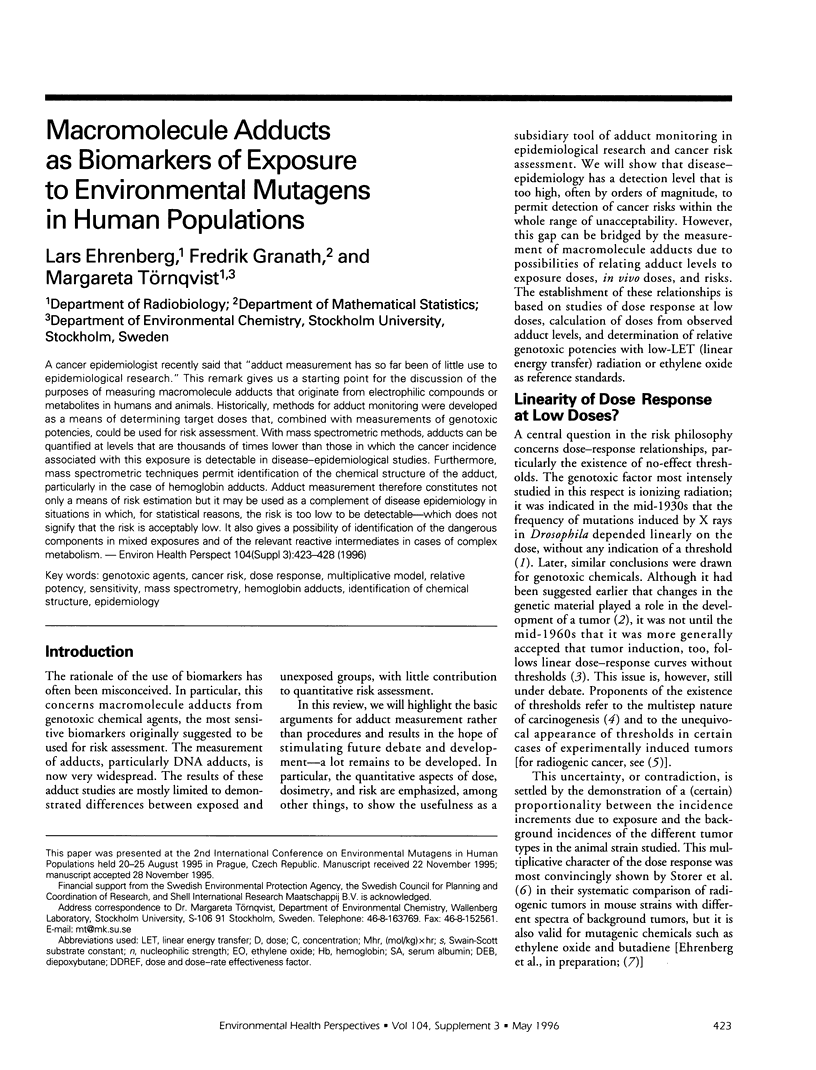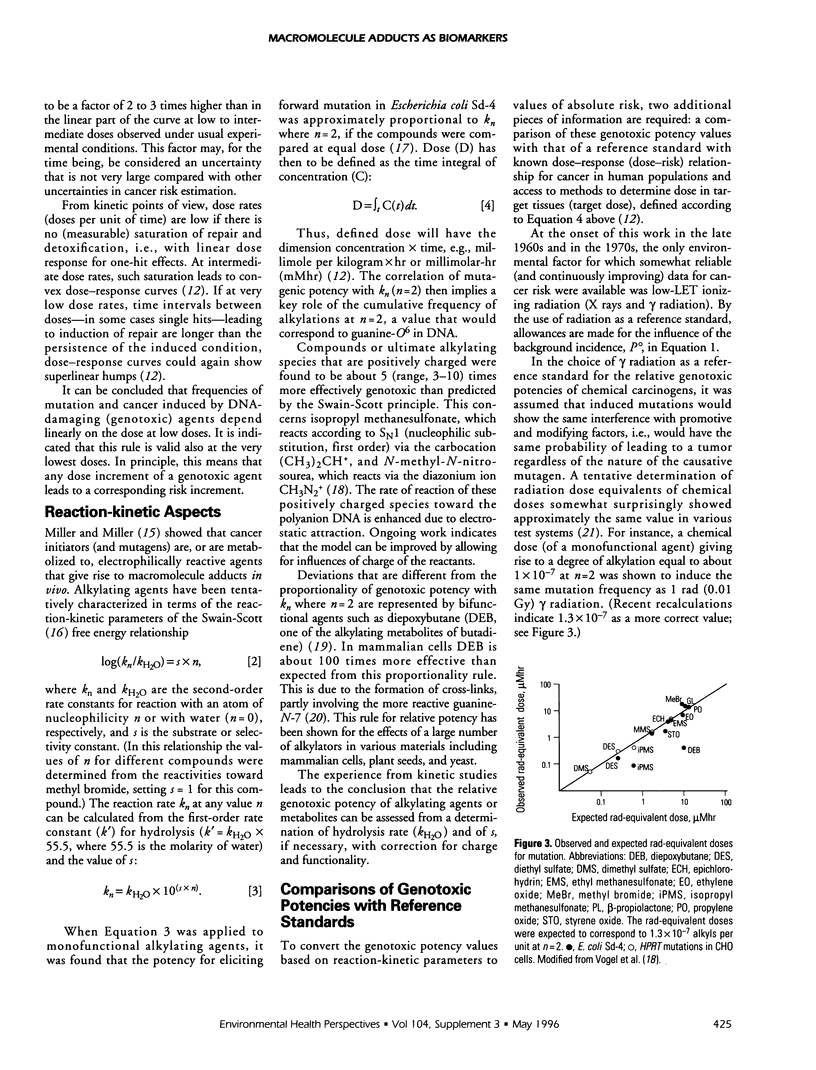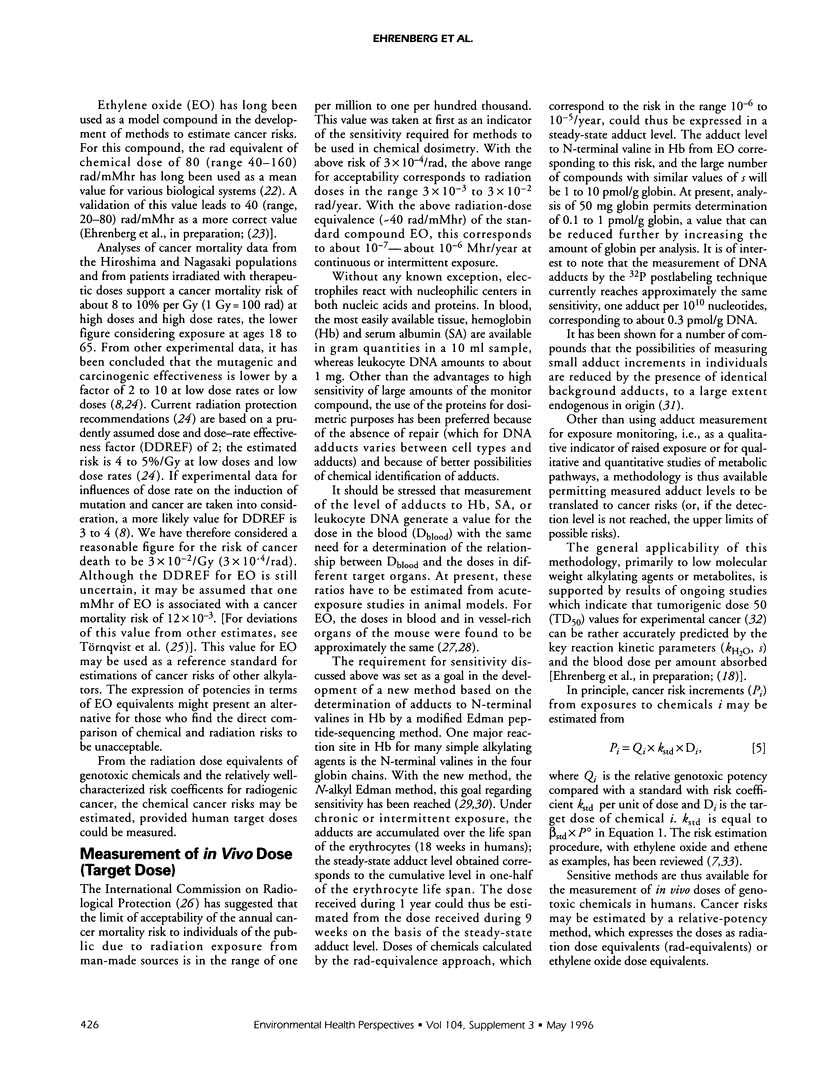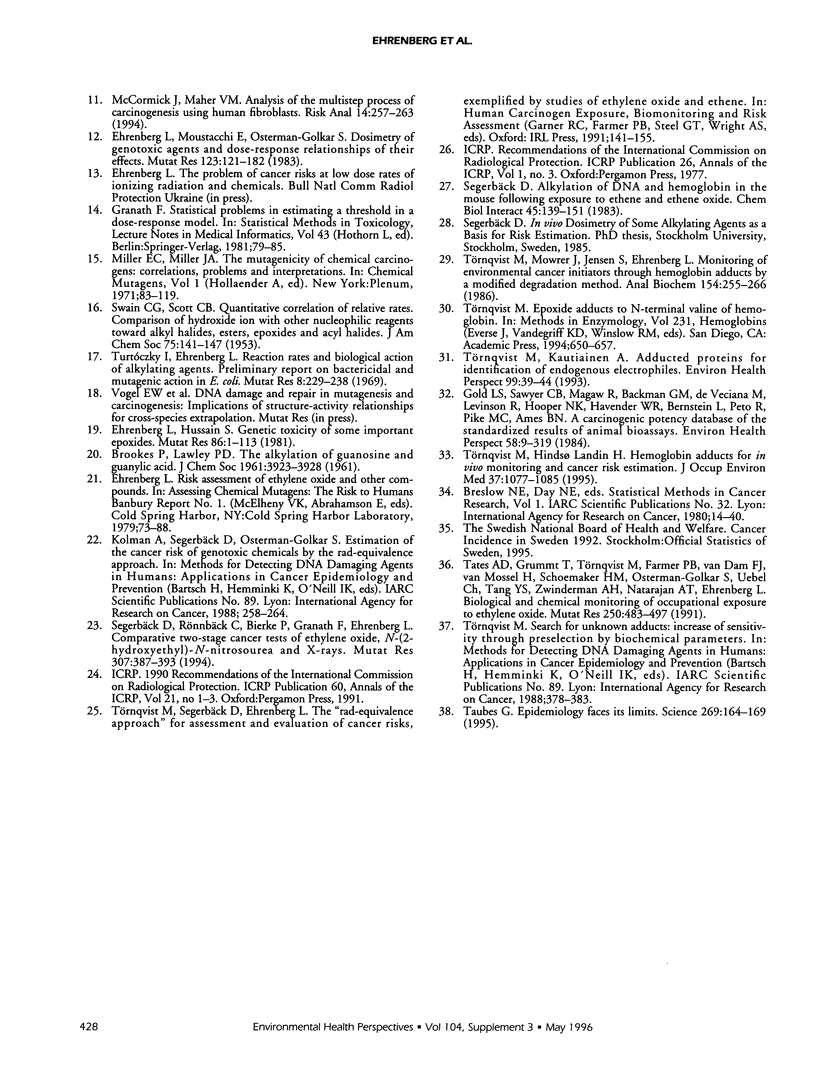Abstract
A cancer epidemiologist recently said that "adduct measurement has so far been of little use to epidemiological research." This remark gives us a starting point for the discussion of the purposes of measuring macromolecule adducts that originate from electrophilic compounds or metabolites in humans and animals. Historically, methods for adduct monitoring were developed as a means of determining target doses that, combined with measurements of genotoxic potencies, could be used for risk assessment. With mass spectrometric methods, adducts can be quantified at levels that are thousands of times lower than those in which the cancer incidence associated with this exposure is detectable in disease-epidemiological studies. Furthermore, mass spectrometric techniques permit identification of the chemical structure of the adduct, particularly in the case of hemoglobin adducts. Adduct measurement therefore constitutes not only a means of risk estimation but it may be used as a complement of disease epidemiology in situations in which, for statistical reasons, the risk is too low to be detectable--which does not signify that the risk is acceptably low. It also gives a possibility of identification of the dangerous components in mixed exposures and of the relevant reactive intermediates in cases of complex metabolism.
Full text
PDF





Selected References
These references are in PubMed. This may not be the complete list of references from this article.
- Burns F., Albert R., Altshuler B., Morris E. Approach to risk assessment for genotoxic carcinogens based on data from the mouse skin initiation-promotion model. Environ Health Perspect. 1983 Apr;50:309–320. doi: 10.1289/ehp.8350309. [DOI] [PMC free article] [PubMed] [Google Scholar]
- Ehrenberg L., Hussain S. Genetic toxicity of some important epoxides. Mutat Res. 1981 Jan;86(1):1–113. doi: 10.1016/0165-1110(81)90034-8. [DOI] [PubMed] [Google Scholar]
- Ehrenberg L., Moustacchi E., Osterman-Golkar S. International Commission for Protection Against Environmental Mutagens and Carcinogens. Dosimetry of genotoxic agents and dose-response relationships of their effects. Mutat Res. 1983 Oct;123(2):121–182. doi: 10.1016/0165-1110(83)90024-6. [DOI] [PubMed] [Google Scholar]
- Gold L. S., Sawyer C. B., Magaw R., Backman G. M., de Veciana M., Levinson R., Hooper N. K., Havender W. R., Bernstein L., Peto R. A carcinogenic potency database of the standardized results of animal bioassays. Environ Health Perspect. 1984 Dec;58:9–319. doi: 10.1289/ehp.84589. [DOI] [PMC free article] [PubMed] [Google Scholar]
- Littlefield N. A., Farmer J. H., Gaylor D. W., Sheldon W. G. Effects of dose and time in a long-term, low-dose carcinogenic study. J Environ Pathol Toxicol. 1980;3(3 Spec No):17–34. [PubMed] [Google Scholar]
- McCormick J. J., Maher V. M. Analysis of the multistep process of carcinogenesis using human fibroblasts. Risk Anal. 1994 Jun;14(3):257–263. doi: 10.1111/j.1539-6924.1994.tb00240.x. [DOI] [PubMed] [Google Scholar]
- Segerbäck D. Alkylation of DNA and hemoglobin in the mouse following exposure to ethene and ethene oxide. Chem Biol Interact. 1983 Jul 15;45(2):139–151. doi: 10.1016/0009-2797(83)90064-9. [DOI] [PubMed] [Google Scholar]
- Segerbäck D., Rönnbäck C., Bierke P., Granath F., Ehrenberg L. Comparative two-stage cancer tests of ethylene oxide, N-(2-hydroxyethyl)-N-nitrosourea and X-rays. Mutat Res. 1994 May 1;307(1):387–393. doi: 10.1016/0027-5107(94)90312-3. [DOI] [PubMed] [Google Scholar]
- Storer J. B., Mitchell T. J., Fry R. J. Extrapolation of the relative risk of radiogenic neoplasms across mouse strains and to man. Radiat Res. 1988 May;114(2):331–353. [PubMed] [Google Scholar]
- Tates A. D., Grummt T., Törnqvist M., Farmer P. B., van Dam F. J., van Mossel H., Schoemaker H. M., Osterman-Golkar S., Uebel C., Tang Y. S. Biological and chemical monitoring of occupational exposure to ethylene oxide. Mutat Res. 1991 Sep-Oct;250(1-2):483–497. doi: 10.1016/0027-5107(91)90205-3. [DOI] [PubMed] [Google Scholar]
- Taubes G. Epidemiology faces its limits. Science. 1995 Jul 14;269(5221):164–169. doi: 10.1126/science.7618077. [DOI] [PubMed] [Google Scholar]
- Turtóczky I., Ehrenberg L. Reaction rates and biological action of alkylating agents. Preliminary report on bactericidal and mutagenic action in E. coli. Mutat Res. 1969 Sep-Oct;8(2):229–238. doi: 10.1016/0027-5107(69)90002-5. [DOI] [PubMed] [Google Scholar]
- Törnqvist M., Ehrenberg L. Risk assessment of urban air pollution. Pharmacogenetics. 1992 Dec;2(6):297–303. [PubMed] [Google Scholar]
- Törnqvist M., Kautiainen A. Adducted proteins for identification of endogenous electrophiles. Environ Health Perspect. 1993 Mar;99:39–44. doi: 10.1289/ehp.99-1567046. [DOI] [PMC free article] [PubMed] [Google Scholar]
- Törnqvist M., Landin H. H. Hemoglobin adducts for in vivo dose monitoring and cancer risk estimation. J Occup Environ Med. 1995 Sep;37(9):1077–1085. doi: 10.1097/00043764-199509000-00008. [DOI] [PubMed] [Google Scholar]
- Törnqvist M., Mowrer J., Jensen S., Ehrenberg L. Monitoring of environmental cancer initiators through hemoglobin adducts by a modified Edman degradation method. Anal Biochem. 1986 Apr;154(1):255–266. doi: 10.1016/0003-2697(86)90524-5. [DOI] [PubMed] [Google Scholar]


